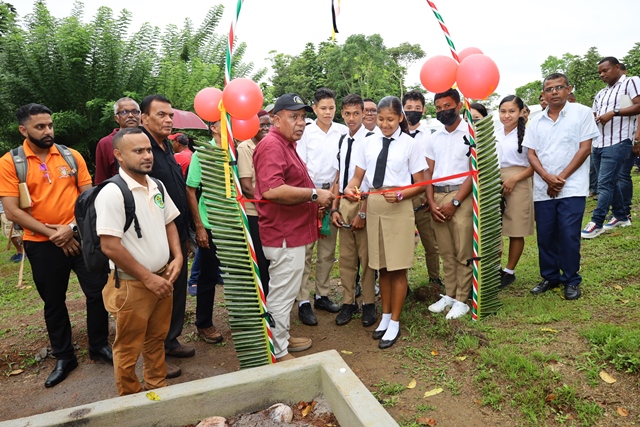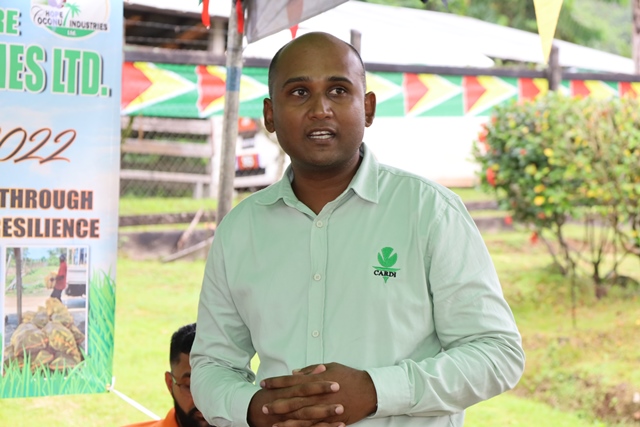– as Gov’t moves forward with coconut decentralisation programme
Agriculture Minister Zulfikar Mustapha on Wednesday, October 12, commissioned a new coconut seedling nursery in Hosororo Village, Barima – Waini (Region One).
The nursery, which is located in the National Agriculture Research and Extension Institute’s (NAREI) compound, was constructed and stocked at a cost of $4.3 million.
At full capacity, the nursery will be able to produce some 206,000 seedlings annually.
In addition to the nursery, Minister Mustapha also commissioned several new pieces of equipment for NAREI’s spice processing facility. These pieces of equipment, which include a ginger washer, ginger slicer, ginger grinder, and a vibro sifter, were procured at a cost of $9,747,756.
While offering remarks at the event, Minister Mustapha said the construction of the facility is part of the government’s decentralization efforts for the agriculture sector.
“Today is a great day for us. We are here to commission a new coconut nursery. We know many farmers in the region would usually travel to Georgetown to purchase quality seedlings. After consultation, we decided to have one constructed here so you can benefit from the same services the farmers in Georgetown and other coastal areas receive. Having this facility here will not only reduce the cost of acquiring the planting materials you need but it will also help us to increase our national production figures. This is part of our coconut decentralization programme,” Minister Mustapha said.
Minister Mustapha noted that given the benefits of and the growing demand for coconuts and coconut bi-products, farmers in Guyana should get involved in coconut production. He said the government is working to make the necessary resources available to expand the industry.
“We all know the benefits of coconuts. The world is also cognizant of the benefits of coconuts and all of their many uses. Anyone who is involved in this industry will benefit from several streams of income because of its many bi-products. You can use coconut fibers, you can make oils, soaps, lotions, beauty supplies, pharmaceuticals, and cooking products just to name a few. The coconut water industry alone is estimated at $2.2 billion. We have to take advantage of the global demand. We have the land and we are making the materials and inputs available. We can tap into those markets,” the minister said.
He also told farmers that following this year’s Agri Investment Forum and Expo which was held back in May, many investors are now coming to Guyana to invest, some of whom have expressed interest in investing in the production of spices.
While noting that access to markets continues to be an issue in the region, the minister said that the government through the New Guyana Marketing Corporation has been successful in finding markets for farmers in other remote parts of the country. While assuring farmers that issues with access to markets will now be a thing of the past, Minister Mustapha told the farmers that the government is currently engaging the CARICOM Member States to remove the non-tariff barriers to many of Guyana’s traditional products.
CARDI’s Representative in Guyana, Mr. Juman Kundun noted that the demand for coconut is constantly increasing in the region and globally. Furthermore, the CARDI Head said that Guyana is among three of the major coconut-producing countries in the region; producing some 20 per cent of the region’s demand while the Dominican Republic produces some 59 per cent, and Jamaica some 12 per cent.
With that said, Mr. Kundun lauded the government’s efforts towards expanding the industry, adding that initiatives like this will enable Guyana to go beyond its current production levels.
General Manager of Hope Estate, Ricky Roopchand indicated that the facility will be able to service the region’s demand and that the first set of seedlings will be available for purchase by the end of December.












